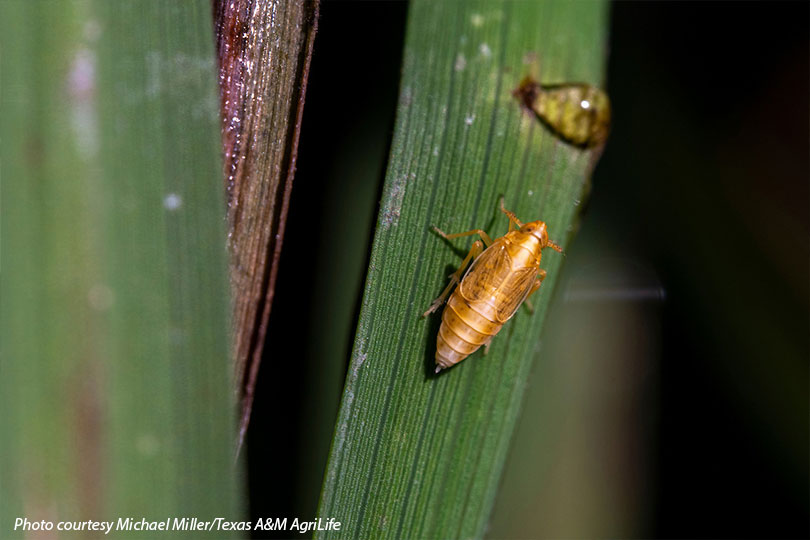By Emmy Powell
Communications Specialist
The Texas Rice Belt is facing a growing threat from the rice delphacid, an invasive pest with no proven method of control.
Experts with the Texas A&M AgriLife Extension Service are working alongside USA Rice in a new multistate response to address the spread and find solutions.
The pest is threatening thousands of acres of rice in Texas, Louisiana, Arkansas and Mississippi.
“We are in a crisis situation,” said Sam Rustom, AgriLife Extension agronomist and Texas A&M assistant professor.
He said 2025 has been the worst year by far for damage from the rice delphacid.
The pest, a small planthopper native to Central and South America, first appeared in 2015. In Texas, it is found most often in Colorado, Wharton and Matagorda counties, according to AgriLife.
Rice delphacids thrive in warm, wet conditions, has been a consistent weather pattern across the rice belt this year.
Rustom, alongside other experts across Texas A&M AgriLife, are working with researchers at both Louisiana State University and the University of Arkansas to identify new chemistries and practical management strategies to help farmers control the pest.
Rice delphacids feed by extracting sap from rice plants, causing damage known as “hopperburn.” They also excrete a sticky residue that promotes sooty mold growth and can transmit the rice hoja blanca virus, which stunts plant growth and leads to reduces yields.
“We are concerned we now have an overwintering population, because even after hard freezes, they are being found in every rice field,” Rustom said. “Historically, it has been a ratoon crop pest that doesn’t get bad until late September and into October. But beginning last year, it started to become a problem in the main crop. Now, it has been confirmed as a multistate issue.”
Texas rice farmers plant between 145,000 to 180,000 acres annually, making the Lone Star State one of the top five rice-growing states.
Texas farmers primarily grow long-grain rice, including aromatic varieties like jasmine and basmati.
In recent testimony before the Texas House Agriculture & Livestock Committee, TFB member and rice farmer Tim Gertson of Lissie emphasized the devastating impact of the pest and the need for state and federal support.
“This year, the rice delphacid was more widespread in first crop rice than in any previous year since its initial detection in 2015,” Gertson said. “Although insecticides are being used to control the rice delphacid, their effectiveness is limited. They offer only short-term control, requiring repeated applications.”
Texas Farm Bureau (TFB) continues to advocate for resources and research to support farmers in the Texas Rice Belt.
“This pest is another example of why timely research, funding and communication between growers, universities and policymakers are critical,” said Brant Wilbourn, TFB associate director of Commodity and Regulatory Activities. “Farmers are doing everything they can to manage this infestation, but they need coordinated action to protect Texas rice production and the communities that depend on it.”
A fact sheet was created by AgriLife Research to help the public better understand the insect.


Leave A Comment